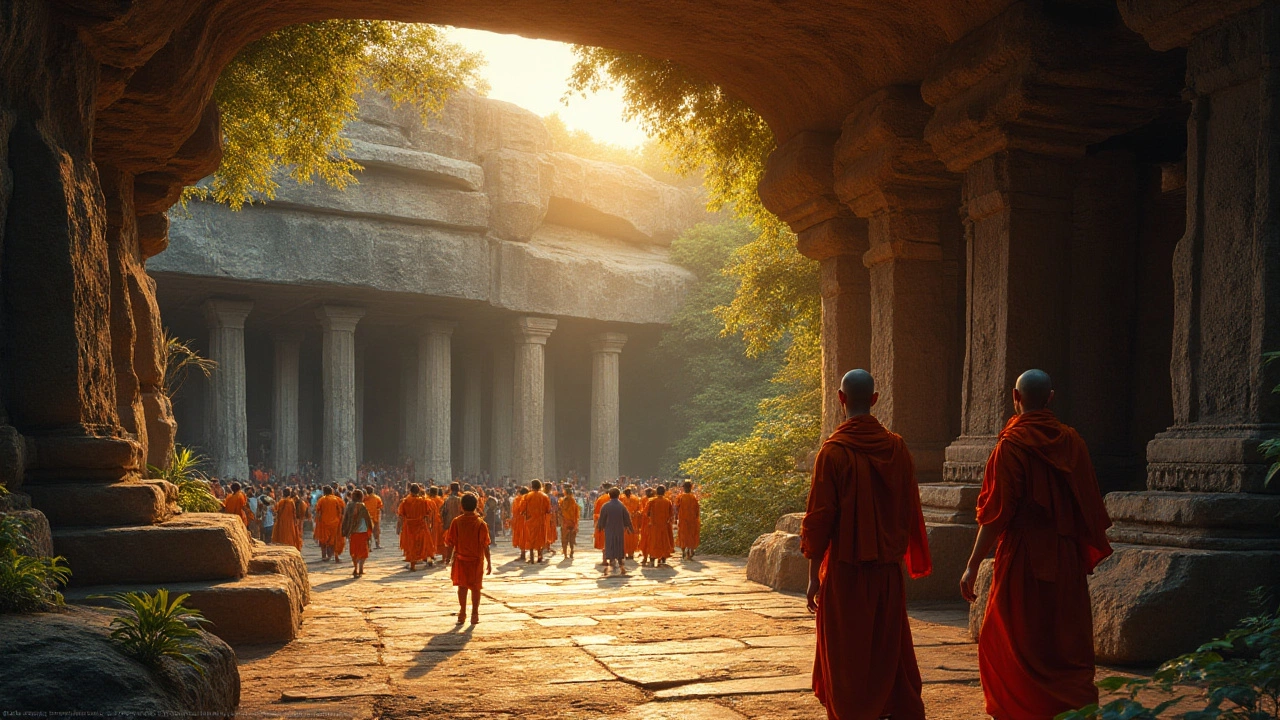SEARCH
Ajanta Caves: History, Highlights & How to Visit
Thinking about adding a bit of ancient art to your India itinerary? The Ajanta Caves are a perfect stop. Carved into a basalt cliff in Maharashtra, they hold some of the best‑preserved Buddhist paintings on the planet. You’ll walk through rock‑cut chambers, see vivid murals, and get a feel for life in the 2nd century BCE. Let’s break down what you need to know before you go.
Where are the Ajanta Caves and why they matter
The caves sit near the town of Ajanta, about 100 km from Aurangabad and 260 km from Pune. They were built in two phases: a group of early caves (1‑14) from around 200 BCE and a later, more elaborate set (15‑30) from the 5th‑6th century CE. The later caves are famous for their wall paintings that show Jataka tales, Buddha’s life, and daily scenes like musicians and market stalls. These artworks help scholars understand ancient Indian society and Buddhist teachings.
UNESCO listed Ajanta as a World Heritage Site in 1983 because the site shows an impressive blend of architecture, sculpture, and painting. The caves are also a rare example of a living tradition—local monks still perform rituals here, adding a quiet, spiritual vibe to the tourist experience.
Practical tips for a smooth visit
Getting there: The easiest way is to fly into Aurangabad (IXU) and take a taxi or a shared auto to the caves. The road trip takes about two hours. If you’re on a train, the nearest station is also Aurangabad, with regular connections from Mumbai and Delhi.
Best time to go: October to March offers cool, dry weather—perfect for walking and photography. Summer can be hot and monsoon months (June‑September) make the steps slippery, so plan accordingly.
Tickets & timing: Entry costs INR 40 for Indian citizens and INR 600 for foreigners (2025 rates). The site opens at 9 am and closes at 5 pm, with the last entry at 4 pm. Arrive early to beat the crowds, especially on weekends.
What to bring: Wear comfortable shoes; the paths are uneven and some steps are steep. A bottle of water, a hat, and sunscreen are must‑haves. Photography is allowed, but flash is prohibited inside the caves to protect the paintings.
Guides & audio help: Hiring a local guide costs around INR 300 and gives you detailed stories behind each mural. If you prefer a solo walk, audio guides are available at the ticket counter for a small fee.
Plan about 2‑3 hours to explore the main painted caves (15‑19, 26). If you have extra time, check out the unfinished caves and the small museum near the entrance for artifacts and maps.
That’s it—simple, clear, and ready to use. With these tips you’ll walk into the Ajanta Caves confident, curious, and prepared to enjoy one of India’s most stunning heritage sites.

Exploring India's Oldest World Heritage Site: A Dive into Cultural History
This article delves into India's oldest UNESCO World Heritage Site, the Ajanta Caves. We explore the historical and cultural significance of these ancient rock-cut caves, showcasing stunning artistry and offering insights into ancient Indian life. Through captivating facts and helpful tips, readers are guided in understanding the timeless allure and rich heritage that these sites embody, inviting an exploration of India's fascinating cultural journey. Discover why the Ajanta Caves continue to captivate the imagination of history enthusiasts worldwide.
Continue reading